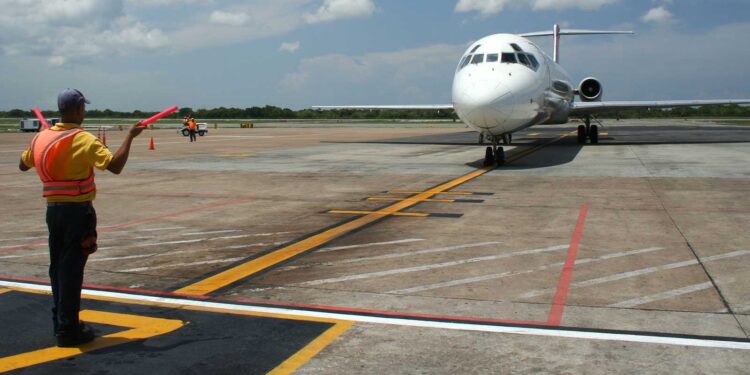International Tech Stops – Part 1: Clearance and Landing Considerations

This is part one of a two-article series on tech stop considerations for business aviation.
Procedures and requirements for clearing customs, immigration, and quarantine (CIQ) on international tech stops vary across the world. While some locations including the U.S. require CIQ clearance for all international arrivals including tech stops, other locations such as the Cape Verde Islands, may have no official CIQ clearance requirements in place.
The following is an overview of what you need to know:
1. CIQ clearance hours
In most cases CIQ clearance hours mirror airport operating hours but this is not always the case. Manaus (SBEG), a popular tech stop in Brazil, closes CIQ processing to general aviation (GA) between 1300-1545, 2130-2330 and 0030-0230 local. Sydney (YSSY) is operational 24 hours but CIQ clearance of certain aircraft, depending upon the maximum takeoff weight (MTOW), is restricted between 2300-0600 local. If the aircraft is in a restricted category your schedule may need to be changed.
2. Easy clearance options
Certain countries and airports around the world have procedures in place to expedite CIQ clearance. Canada, for example, requires clearance for tech stops but this is usually accomplished via Canadian Accelerated Service System (CANPASS) where passengers may not even be aware they’re being cleared. For GA operations to Canada the pilot in command calls in to report the flight arrival, at least two hours prior to departure, and calls in again for verbal clearance upon landing. In most cases no CIQ agent shows up and it’s allowable, with CANPASS, to land during hours when airport CIQ services are not operational. Certain airports in the UK — including Stansted (EGSS), Luton (EGGW), and Edinburgh (EGPH) — have CIQ clearance forms that may be submitted in advance to greatly expedite clearance process on arrival.
3. Visa requirements
While rules vary by country and local airport authorities it’s not normally necessary for crew or passengers to obtain visas in advance for single international tech stops. In Russia the general rule is that visas are not needed for one international tech stop but are required if you’re making more than a single tech stop. Petropavlovsk (UHHP) does not require visas for tech stops unless you’re picking up/dropping off passengers or crew. Certain airports in Russia, however, want to see visas for all stops, even single international tech stops. In the case of China, visas are usually not required for single tech stops. For longer stays in China it may be possible, depending on location and if you’re leaving to a different international location than you arrived from, to obtain visas on arrival good for up to 72 hours. Brazilian visas are not normally required for passengers who stay onboard during fuel uplifts but are needed if passengers leave the aircraft. Visa rules and required procedures should always be verified and confirmed with your 3rd-party provider, and/or ground handler, well in advance of day of operation.
4. Consult your ground handler
For the best tech stop options for your particular mission it’s always recommended to consult your 3rd-party provider. For example, Ecuador tech stops are usually quicker turns, with less airport congestion, at Manta (SEMT) as opposed to Guayaquil (SEGU). In Turkey it’s usually more efficient to avoid Istanbul (LTFJ) for quick turns and crew changes as airport slots are required 24 hours and LTFJ slots are in many cases off from requested times. For tech stops in Turkey you’re better off using Izmir (LTBJ), Ankara (LTAC) or Dalaman (LTBS). Corlu (LTBU) is another good option for a tech stop in Turkey. LTBU is approximately a 90 minute drive from Istanbul Ataturk (LTBA) airport.
5. Passengers on tech stops
At many locations passengers and crew need to stay on or near the aircraft during international tech stops. Brazil, for example, requires passengers who do not have visas to remain onboard. At other international locations passengers may deplane so long as they remain airside. It’s best practice to research each and every tech stop location to verify local international clearance rules and procedures. For example, at some locations it’s not permissible for passengers to remain on board during aircraft fueling. If passengers deplane, however, they may or may not need to clear CIQ at the particular location.
6. No-go tech stops
Be mindful that certain airports have rules stating that the location may not be used for tech stops. Two examples are Beijing (ZBAA) and Istanbul Ataturk (LTBA).
Conclusion
Due to wide variation in international tech stop CIQ requirements we recommend that operators take the time to confirm all specific requirements and procedures for each intended international tech stop. This, ideally, should be done early on in the trip planning process.
Later, we’ll discuss permits and operating tips for tech stops.
Questions?
If you have any questions about this article or would like assistance planning your next trip, contact me at shawnleavell@univ-wea.com.




